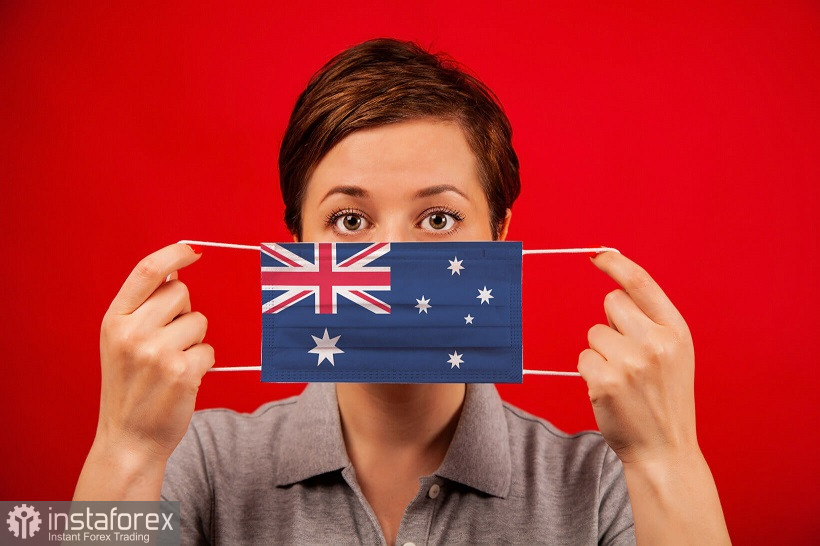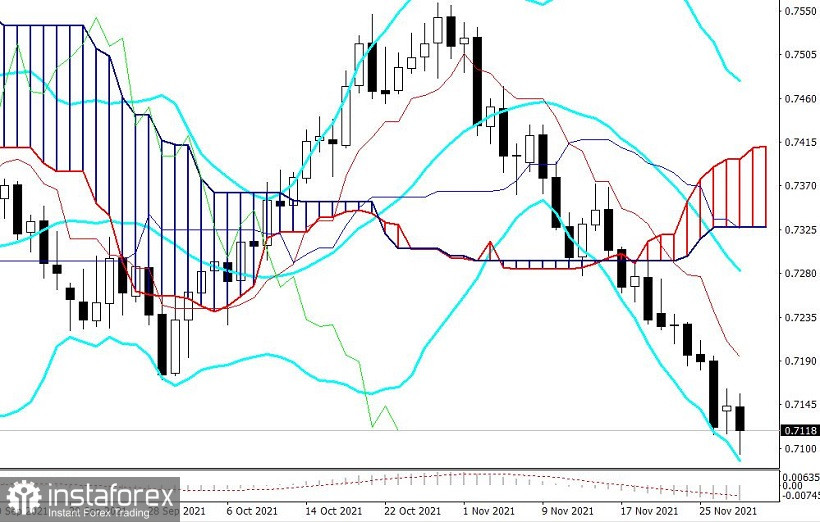The Australian dollar, against the US currency, updated its annual price low during today's Asian session, reaching the level of 0.7094. It was last seen in the 0.70 area in November 2020, against the backdrop of another wave of the coronavirus crisis. This time, the reason for the pair's decline was also COVID-19 – a new variant of coronavirus (Omicron) has already reached Australia, provoking an increase in panic among AUD/USD traders. And although this strain has not yet been fully studied, its "reputation" is frankly not the best – after the first case of infection with a variant of the omicron strain was detected in the country, the Australian dollar began to rapidly lose its position. The representative of the Reserve Bank of Australia Guy Debelle, who voiced "dovish" rhetoric, also adds additional pressure on the pair. As a result, the AUD/USD bears tested new price lows, even despite the stolidity of dollar bulls.

The Australian dollar took the news painfully that Omicron had reached the Green Continent. The country has just completed a series of long lockdowns, after a spring-summer outbreak of morbidity. In particular, the sixth lockdown was completed not so long ago in the largest Australian state of Victoria. Meanwhile, in Sydney, the 100-day lockdown ended only a month ago – in mid-October (most restrictions have been lifted, but only for vaccinated people). Strict quarantine has hit the labor market. The unemployment rate rose to 5.2% in October, against a more optimistic forecast (4.8%). The indicator showed growth after a 10-month consecutive decline. The October result is the worst since April of this year. The number of employed was also disappointing. With the forecast of growth up to 50 thousand, the indicator collapsed into the negative area, having decreased by 46 thousand. This indicator also came out in the negative zone both in September and August.
The Reserve Bank of Australia reacted "understandingly" to this negative trend. The regulator took a wait-and-see attitude, observing the recovery process of the economy after a prolonged lockdown. And although the failed "Australian Nonfarm" put an end to the issue of a possible acceleration of the pace of curtailing the stimulus program, the Central Bank did not revise its plans for its completion. RBA representatives said they would buy government securities at a $4 billion rate per week until mid-February next year. According to general forecasts, the volume of QE will be reduced to 3 billion at the February meeting.
Therefore, the new "coronavirus threat" has significantly hit the positions of the Australian dollar. If the country's largest states are quarantined again, the RBA will postpone the next round of QE cuts.
To date, the authorities of some states have introduced preventive quarantine restrictions. For example, the Governments of New South Wales and Victoria have introduced 72-hour isolation requirements for all fully vaccinated persons arriving from abroad, regardless of where they came from. This happened after two travelers (who arrived from Doha) had a new variant of the virus confirmed in quarantine in New South Wales. Both people are fully vaccinated and the disease is asymptomatic. However, this incident alarmed the whole of Australia, putting pressure on the AUD.
The deputy head of the RBA Guy Debelle also exerted additional pressure on the Australian dollar. On the one hand, his speech was not devoted to the prospects of the Central Bank's monetary policy (the forum was dedicated to the problems of indigenous peoples of Australia), but as he answered journalists' questions, he made it clear that the regulator would adhere to an accommodative policy in the near future. In this matter, he supported his "boss", who recently voiced similar rhetoric. It can be recalled that the head of the Central Bank, Philip Lowe, following the results of the last meeting of the regulator, categorically ruled out the option of tightening the parameters of monetary policy within the next year. At the same time, he noted that the hawkish expectations of the market are extremely unrealistic (it was about a possible rate hike next year). Lowe also said that optimistic estimates regarding the recovery processes do not indicate that the rate will definitely be raised before 2024. According to him, there is a "high degree of uncertainty" in this issue, so it is quite likely that the rate will remain at the current level until the designated boundary period. Given recent events, it can be assumed that the RBA's position on this issue will not change anytime soon.
As for the notorious new strain, there are still more questions than answers. The World Health Organization reported yesterday that they do not have enough data that Omicron is more dangerous than Delta. In addition, the WHO has no data on whether this option leads to a more severe course of the disease. Here, we can only operate with the data of the Ministry of Health of South Africa. According to the head of the ministry of this South African country, a sharp increase in the number of new cases of COVID-19 over the past few weeks has not led to a significant increase in the number of hospitalized.

Therefore, the fundamental background for the AUD/USD pair is not in favor of the Australian dollar. At the same time, short positions look risky, as bears unsuccessfully test the support level of 0.7100. Sellers attempted to attack the area of 0.70, but return back to the area of 0.7110-0.7120. It is advisable to consider sales only after consolidating below the level of 0.7100. In this case, the first (and so far the main) target will be the 0.7050 level – this is the lower line of the Bollinger Bands indicator on the D1 timeframe.





















